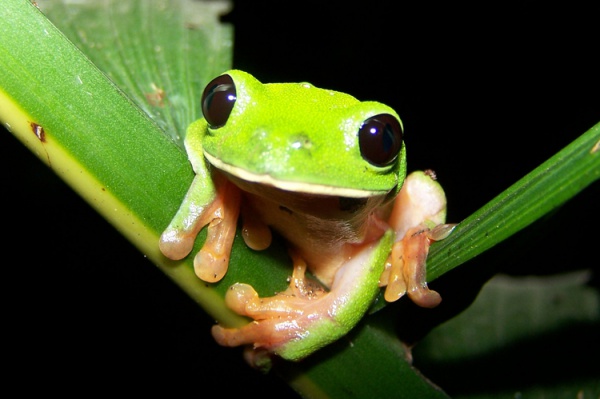Facts About Morelet's tree frog
Morelet's tree frog, also known as the black-eyed leaf frog or popeye hyla, is a distinctive and rare species of leaf frog belonging to the Phyllomedusidae family. These frogs are notable for their vibrant green bodies, striking black eyes, and colorful red or pink underbellies. They thrive in the moist, subtropical lowland forests and wetlands of Belize, El Salvador, Guatemala, Honduras, and Mexico.
During the summer months, which signal their extended breeding season, Morelet's tree frogs lay clutches of 50 to 75 eggs on vegetation or rocks situated over water. This strategy ensures that when the eggs hatch, the tadpoles have immediate access to an aquatic environment.
Sadly, the conservation status of Morelet's tree frog is alarming. Their populations are declining due to habitat destruction driven by industrial and agricultural activities, as well as the devastating Chytridiomycosis infection. Experts predict that the population of these frogs could plummet by over 80% in the next decade, with some areas already witnessing their complete disappearance.
To combat this decline, several conservation initiatives are underway. Protected areas are being established to safeguard their habitats, and researchers are conducting taxonomic studies to gain a clearer understanding of the frog's population status. However, more data on population trends is urgently needed to implement effective conservation strategies.
The future of Morelet's tree frog depends on addressing these human-induced threats and mitigating disease-related challenges. With concerted efforts, we can hope to ensure the long-term survival of this remarkable species.

 Guatemala
Guatemala